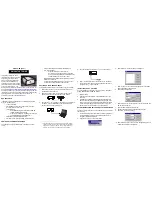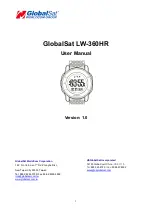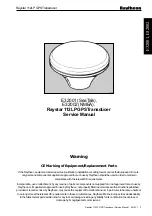
2
INSTALLATION
The AirMap 300 operates from six AA batteries or from 6 to 35 volts DC.
The cigarette lighter adapter included with your unit plugs into virtually
any aircraft’s electrical system. The AirMap 300 automatically switches to
external power when it’s plugged into the unit (provided that the external
power has a higher voltage than the batteries.) If, for any reason, the
external power fails, the unit will automatically switch to the batteries. The
AirMap 300 does not require batteries when external power is in use,
however they make a good backup in case of power failure. A recharge-
able battery pack, (included with the AirMap 300) has a nickle-metal hy-
dride battery and charger built into a pack that’s almost identical to the
alkaline battery pack that slides onto the bottom of the AirMap 300.
An external antenna kit supplied with the unit allows the removable an-
tenna to be mounted on a suction cup bracket up to four feet away from
the GPS receiver.
SUCTION CUP
AND BRACKET
NiMH BATTERY
The AirMap 300 takes these corrections and applies them to the position
and altitude screens, giving you much better accuracy. Even with S/A on,
and without a DGPS receiver, your AirMap 300 gives you outstanding
position and navigation information.
Please sit down with the unit and this manual and familiarize yourself with
them before using this unit in the “real world”. A simulator is built in, which
lets you practice with the receiver.
Summary of Contents for AirMap 300
Page 1: ...INSTALLATION AND OPERATION INSTRUCTIONS AirMap 300 TM...
Page 85: ...81 WINDOW BOXES These boxes are used on Map 3 and Nav 1 only 1 2 3 4 5 6 7 8 9 10 11 12...
Page 86: ...82 13 14 15 16...
Page 87: ...83 WINDOW GROUPS This is a listing of window groups A through O A B C D E F G H I J K L...
Page 88: ...84 M N O...
Page 94: ...90...







































